
NeMo
A scalable generative AI framework built for researchers and developers working on Large Language Models, Multimodal, and Speech AI (Automatic Speech Recognition and Text-to-Speech)
Stars: 13548
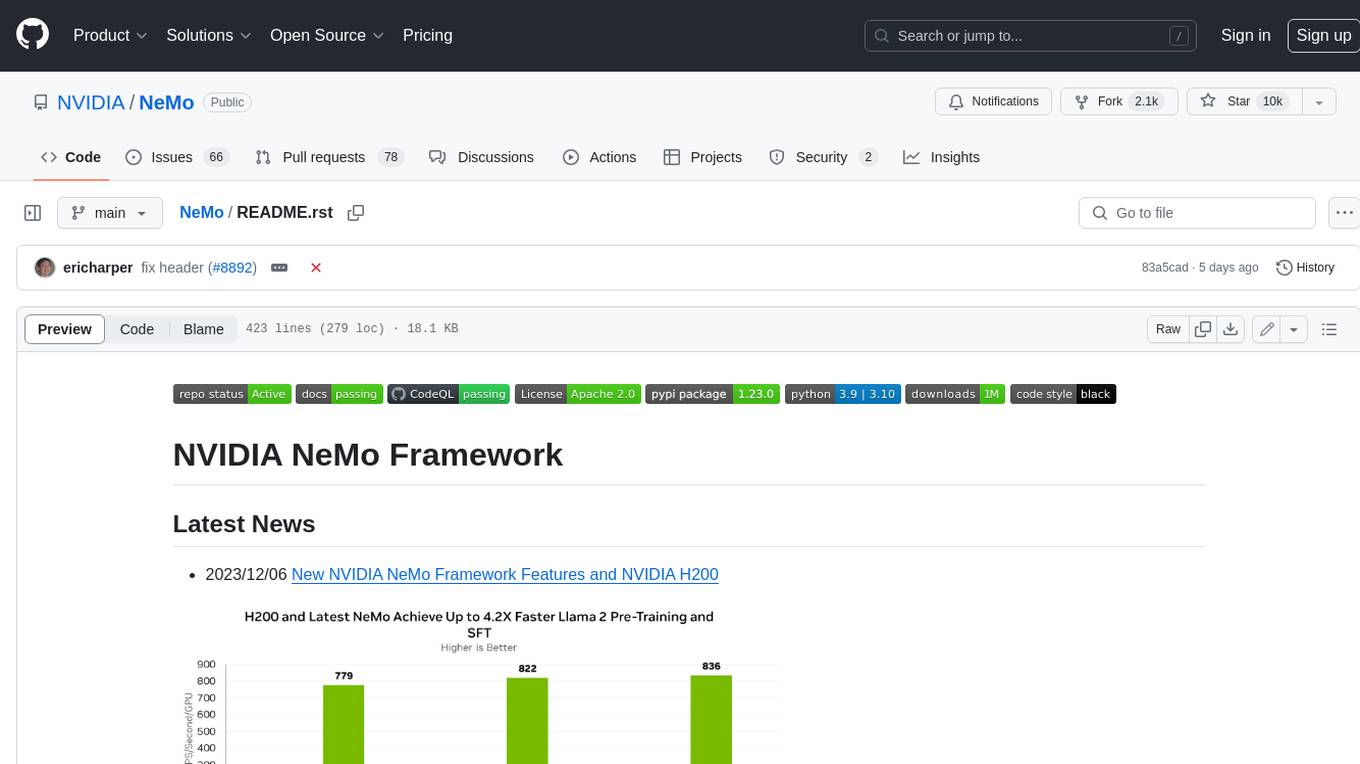
NeMo Framework is a generative AI framework built for researchers and pytorch developers working on large language models (LLMs), multimodal models (MM), automatic speech recognition (ASR), and text-to-speech synthesis (TTS). The primary objective of NeMo is to provide a scalable framework for researchers and developers from industry and academia to more easily implement and design new generative AI models by being able to leverage existing code and pretrained models.
README:
Pretrain and finetune 🤗Hugging Face models via AutoModel
Nemo Framework's latest feature AutoModel enables broad support for 🤗Hugging Face models, with 25.02 focusing on AutoModelForCausalLM in the text generation category. Future releases will enable support for more model families such as Vision Language Model.Training on Blackwell using Nemo
NeMo Framework has added Blackwell support, with 25.02 focusing on functional parity for B200. More optimizations to come in the upcoming releases.NeMo Framework 2.0
We've released NeMo 2.0, an update on the NeMo Framework which prioritizes modularity and ease-of-use. Please refer to the NeMo Framework User Guide to get started.New Cosmos World Foundation Models Support
Advancing Physical AI with NVIDIA Cosmos World Foundation Model Platform (2025-01-09)
The end-to-end NVIDIA Cosmos platform accelerates world model development for physical AI systems. Built on CUDA, Cosmos combines state-of-the-art world foundation models, video tokenizers, and AI-accelerated data processing pipelines. Developers can accelerate world model development by fine-tuning Cosmos world foundation models or building new ones from the ground up. These models create realistic synthetic videos of environments and interactions, providing a scalable foundation for training complex systems, from simulating humanoid robots performing advanced actions to developing end-to-end autonomous driving models.Accelerate Custom Video Foundation Model Pipelines with New NVIDIA NeMo Framework Capabilities (2025-01-07)
The NeMo Framework now supports training and customizing the NVIDIA Cosmos collection of world foundation models. Cosmos leverages advanced text-to-world generation techniques to create fluid, coherent video content from natural language prompts.You can also now accelerate your video processing step using the NeMo Curator library, which provides optimized video processing and captioning features that can deliver up to 89x faster video processing when compared to an unoptimized CPU pipeline.
Large Language Models and Multimodal Models
State-of-the-Art Multimodal Generative AI Model Development with NVIDIA NeMo (2024-11-06)
NVIDIA recently announced significant enhancements to the NeMo platform, focusing on multimodal generative AI models. The update includes NeMo Curator and the Cosmos tokenizer, which streamline the data curation process and enhance the quality of visual data. These tools are designed to handle large-scale data efficiently, making it easier to develop high-quality AI models for various applications, including robotics and autonomous driving. The Cosmos tokenizers, in particular, efficiently map visual data into compact, semantic tokens, which is crucial for training large-scale generative models. The tokenizer is available now on the NVIDIA/cosmos-tokenizer GitHub repo and on Hugging Face.New Llama 3.1 Support (2024-07-23)
The NeMo Framework now supports training and customizing the Llama 3.1 collection of LLMs from Meta.Accelerate your Generative AI Distributed Training Workloads with the NVIDIA NeMo Framework on Amazon EKS (2024-07-16)
NVIDIA NeMo Framework now runs distributed training workloads on an Amazon Elastic Kubernetes Service (Amazon EKS) cluster. For step-by-step instructions on creating an EKS cluster and running distributed training workloads with NeMo, see the GitHub repository here.NVIDIA NeMo Accelerates LLM Innovation with Hybrid State Space Model Support (2024/06/17)
NVIDIA NeMo and Megatron Core now support pre-training and fine-tuning of state space models (SSMs). NeMo also supports training models based on the Griffin architecture as described by Google DeepMind.NVIDIA releases 340B base, instruct, and reward models pretrained on a total of 9T tokens. (2024-06-18)
See documentation and tutorials for SFT, PEFT, and PTQ with Nemotron 340B in the NeMo Framework User Guide.NVIDIA sets new generative AI performance and scale records in MLPerf Training v4.0 (2024/06/12)
Using NVIDIA NeMo Framework and NVIDIA Hopper GPUs NVIDIA was able to scale to 11,616 H100 GPUs and achieve near-linear performance scaling on LLM pretraining. NVIDIA also achieved the highest LLM fine-tuning performance and raised the bar for text-to-image training.Accelerate your generative AI journey with NVIDIA NeMo Framework on GKE (2024/03/16)
An end-to-end walkthrough to train generative AI models on the Google Kubernetes Engine (GKE) using the NVIDIA NeMo Framework is available at https://github.com/GoogleCloudPlatform/nvidia-nemo-on-gke. The walkthrough includes detailed instructions on how to set up a Google Cloud Project and pre-train a GPT model using the NeMo Framework.Speech Recognition
Accelerating Leaderboard-Topping ASR Models 10x with NVIDIA NeMo (2024/09/24)
NVIDIA NeMo team released a number of inference optimizations for CTC, RNN-T, and TDT models that resulted in up to 10x inference speed-up. These models now exceed an inverse real-time factor (RTFx) of 2,000, with some reaching RTFx of even 6,000.New Standard for Speech Recognition and Translation from the NVIDIA NeMo Canary Model (2024/04/18)
The NeMo team just released Canary, a multilingual model that transcribes speech in English, Spanish, German, and French with punctuation and capitalization. Canary also provides bi-directional translation, between English and the three other supported languages.Pushing the Boundaries of Speech Recognition with NVIDIA NeMo Parakeet ASR Models (2024/04/18)
NVIDIA NeMo, an end-to-end platform for the development of multimodal generative AI models at scale anywhere—on any cloud and on-premises—released the Parakeet family of automatic speech recognition (ASR) models. These state-of-the-art ASR models, developed in collaboration with Suno.ai, transcribe spoken English with exceptional accuracy.Turbocharge ASR Accuracy and Speed with NVIDIA NeMo Parakeet-TDT (2024/04/18)
NVIDIA NeMo, an end-to-end platform for developing multimodal generative AI models at scale anywhere—on any cloud and on-premises—recently released Parakeet-TDT. This new addition to the NeMo ASR Parakeet model family boasts better accuracy and 64% greater speed over the previously best model, Parakeet-RNNT-1.1B.NVIDIA NeMo Framework is a scalable and cloud-native generative AI framework built for researchers and PyTorch developers working on Large Language Models (LLMs), Multimodal Models (MMs), Automatic Speech Recognition (ASR), Text to Speech (TTS), and Computer Vision (CV) domains. It is designed to help you efficiently create, customize, and deploy new generative AI models by leveraging existing code and pre-trained model checkpoints.
For technical documentation, please see the NeMo Framework User Guide.
NVIDIA NeMo 2.0 introduces several significant improvements over its predecessor, NeMo 1.0, enhancing flexibility, performance, and scalability.
-
Python-Based Configuration - NeMo 2.0 transitions from YAML files to a Python-based configuration, providing more flexibility and control. This shift makes it easier to extend and customize configurations programmatically.
-
Modular Abstractions - By adopting PyTorch Lightning’s modular abstractions, NeMo 2.0 simplifies adaptation and experimentation. This modular approach allows developers to more easily modify and experiment with different components of their models.
-
Scalability - NeMo 2.0 seamlessly scaling large-scale experiments across thousands of GPUs using NeMo-Run, a powerful tool designed to streamline the configuration, execution, and management of machine learning experiments across computing environments.
Overall, these enhancements make NeMo 2.0 a powerful, scalable, and user-friendly framework for AI model development.
[!IMPORTANT]
NeMo 2.0 is currently supported by the LLM (large language model) and VLM (vision language model) collections.
- Refer to the Quickstart for examples of using NeMo-Run to launch NeMo 2.0 experiments locally and on a slurm cluster.
- For more information about NeMo 2.0, see the NeMo Framework User Guide.
- NeMo 2.0 Recipes contains additional examples of launching large-scale runs using NeMo 2.0 and NeMo-Run.
- For an in-depth exploration of the main features of NeMo 2.0, see the Feature Guide.
- To transition from NeMo 1.0 to 2.0, see the Migration Guide for step-by-step instructions.
NeMo Curator and NeMo Framework support video curation and post-training of the Cosmos World Foundation Models, which are open and available on NGC and Hugging Face. For more information on video datasets, refer to NeMo Curator. To post-train World Foundation Models using the NeMo Framework for your custom physical AI tasks, see the Cosmos Diffusion models and the Cosmos Autoregressive models.
All NeMo models are trained with Lightning. Training is automatically scalable to 1000s of GPUs. You can check the performance benchmarks using the latest NeMo Framework container here.
When applicable, NeMo models leverage cutting-edge distributed training techniques, incorporating parallelism strategies to enable efficient training of very large models. These techniques include Tensor Parallelism (TP), Pipeline Parallelism (PP), Fully Sharded Data Parallelism (FSDP), Mixture-of-Experts (MoE), and Mixed Precision Training with BFloat16 and FP8, as well as others.
NeMo Transformer-based LLMs and MMs utilize NVIDIA Transformer Engine for FP8 training on NVIDIA Hopper GPUs, while leveraging NVIDIA Megatron Core for scaling Transformer model training.
NeMo LLMs can be aligned with state-of-the-art methods such as SteerLM, Direct Preference Optimization (DPO), and Reinforcement Learning from Human Feedback (RLHF). See NVIDIA NeMo Aligner for more information.
In addition to supervised fine-tuning (SFT), NeMo also supports the latest parameter efficient fine-tuning (PEFT) techniques such as LoRA, P-Tuning, Adapters, and IA3. Refer to the NeMo Framework User Guide for the full list of supported models and techniques.
NeMo LLMs and MMs can be deployed and optimized with NVIDIA NeMo Microservices.
NeMo ASR and TTS models can be optimized for inference and deployed for production use cases with NVIDIA Riva.
[!IMPORTANT]
NeMo Framework Launcher is compatible with NeMo version 1.0 only. NeMo-Run is recommended for launching experiments using NeMo 2.0.
NeMo Framework Launcher is a cloud-native tool that streamlines the NeMo Framework experience. It is used for launching end-to-end NeMo Framework training jobs on CSPs and Slurm clusters.
The NeMo Framework Launcher includes extensive recipes, scripts, utilities, and documentation for training NeMo LLMs. It also includes the NeMo Framework Autoconfigurator, which is designed to find the optimal model parallel configuration for training on a specific cluster.
To get started quickly with the NeMo Framework Launcher, please see the NeMo Framework Playbooks. The NeMo Framework Launcher does not currently support ASR and TTS training, but it will soon.
Getting started with NeMo Framework is easy. State-of-the-art pretrained NeMo models are freely available on Hugging Face Hub and NVIDIA NGC. These models can be used to generate text or images, transcribe audio, and synthesize speech in just a few lines of code.
We have extensive tutorials that can be run on Google Colab or with our NGC NeMo Framework Container. We also have playbooks for users who want to train NeMo models with the NeMo Framework Launcher.
For advanced users who want to train NeMo models from scratch or fine-tune existing NeMo models, we have a full suite of example scripts that support multi-GPU/multi-node training.
- Python 3.10 or above
- Pytorch 2.5 or above
- NVIDIA GPU (if you intend to do model training)
| Version | Status | Description |
|---|---|---|
| Latest | Documentation of the latest (i.e. main) branch. | |
| Stable | Documentation of the stable (i.e. most recent release) |
The NeMo Framework can be installed in a variety of ways, depending on your needs. Depending on the domain, you may find one of the following installation methods more suitable.
-
Conda / Pip: Install NeMo-Framework with native Pip into a virtual environment.
- Used to explore NeMo on any supported platform.
- This is the recommended method for ASR and TTS domains.
- Limited feature-completeness for other domains.
-
NGC PyTorch container: Install NeMo-Framework from source with feature-completeness into a highly optimized container.
- For users that want to install from source in a highly optimized container.
-
NGC NeMo container: Ready-to-go solution of NeMo-Framework
- For users that seek highest performance.
- Contains all dependencies installed and tested for performance and convergence.
NeMo-Framework provides tiers of support based on OS / Platform and mode of installation. Please refer the following overview of support levels:
- Fully supported: Max performance and feature-completeness.
- Limited supported: Used to explore NeMo.
- No support yet: In development.
- Deprecated: Support has reached end of life.
Please refer to the following table for current support levels:
| OS / Platform | Install from PyPi | Source into NGC container |
|---|---|---|
linux - amd64/x84_64
|
Limited support | Full support |
linux - arm64
|
Limited support | Limited support |
darwin - amd64/x64_64
|
Deprecated | Deprecated |
darwin - arm64
|
Limited support | Limited support |
windows - amd64/x64_64
|
No support yet | No support yet |
windows - arm64
|
No support yet | No support yet |
Install NeMo in a fresh Conda environment:
conda create --name nemo python==3.10.12
conda activate nemoNeMo-Framework publishes pre-built wheels with each release. To install nemo_toolkit from such a wheel, use the following installation method:
pip install "nemo_toolkit[all]"If a more specific version is desired, we recommend a Pip-VCS install. From NVIDIA/NeMo, fetch the commit, branch, or tag that you would like to install.
To install nemo_toolkit from this Git reference $REF, use the following installation method:
git clone https://github.com/NVIDIA/NeMo
cd NeMo
git checkout @${REF:-'main'}
pip install '.[all]'To install a specific domain of NeMo, you must first install the nemo_toolkit using the instructions listed above. Then, you run the following domain-specific commands:
pip install nemo_toolkit['all'] # or pip install "nemo_toolkit['all']@git+https://github.com/NVIDIA/NeMo@${REF:-'main'}"
pip install nemo_toolkit['asr'] # or pip install "nemo_toolkit['asr']@git+https://github.com/NVIDIA/NeMo@$REF:-'main'}"
pip install nemo_toolkit['nlp'] # or pip install "nemo_toolkit['nlp']@git+https://github.com/NVIDIA/NeMo@${REF:-'main'}"
pip install nemo_toolkit['tts'] # or pip install "nemo_toolkit['tts']@git+https://github.com/NVIDIA/NeMo@${REF:-'main'}"
pip install nemo_toolkit['vision'] # or pip install "nemo_toolkit['vision']@git+https://github.com/NVIDIA/NeMo@${REF:-'main'}"
pip install nemo_toolkit['multimodal'] # or pip install "nemo_toolkit['multimodal']@git+https://github.com/NVIDIA/NeMo@${REF:-'main'}"NOTE: The following steps are supported beginning with 24.04 (NeMo-Toolkit 2.3.0)
We recommended that you start with a base NVIDIA PyTorch container: nvcr.io/nvidia/pytorch:25.01-py3.
If starting with a base NVIDIA PyTorch container, you must first launch the container:
docker run \
--gpus all \
-it \
--rm \
--shm-size=16g \
--ulimit memlock=-1 \
--ulimit stack=67108864 \
nvcr.io/nvidia/pytorch:${NV_PYTORCH_TAG:-'nvcr.io/nvidia/pytorch:25.01-py3'}From NVIDIA/NeMo, fetch the commit/branch/tag that you want to install.
To install nemo_toolkit including all of its dependencies from this Git reference $REF, use the following installation method:
cd /opt
git clone https://github.com/NVIDIA/NeMo
cd NeMo
git checkout ${REF:-'main'}
bash reinstall.sh --library allNeMo containers are launched concurrently with NeMo version updates. NeMo Framework now supports LLMs, MMs, ASR, and TTS in a single consolidated Docker container. You can find additional information about released containers on the NeMo releases page.
To use a pre-built container, run the following code:
docker run \
--gpus all \
-it \
--rm \
--shm-size=16g \
--ulimit memlock=-1 \
--ulimit stack=67108864 \
nvcr.io/nvidia/pytorch:${NV_PYTORCH_TAG:-'nvcr.io/nvidia/nemo:25.02'}The NeMo Framework Launcher does not currently support ASR and TTS training, but it will soon.
FAQ can be found on the NeMo Discussions board. You are welcome to ask questions or start discussions on the board.
We welcome community contributions! Please refer to CONTRIBUTING.md for the process.
We provide an ever-growing list of publications that utilize the NeMo Framework.
To contribute an article to the collection, please submit a pull request
to the gh-pages-src branch of this repository. For detailed
information, please consult the README located at the gh-pages-src
branch.
Large Language Models and Multimodal Models
Bria Builds Responsible Generative AI for Enterprises Using NVIDIA NeMo, Picasso (2024/03/06)
Bria, a Tel Aviv startup at the forefront of visual generative AI for enterprises now leverages the NVIDIA NeMo Framework. The Bria.ai platform uses reference implementations from the NeMo Multimodal collection, trained on NVIDIA Tensor Core GPUs, to enable high-throughput and low-latency image generation. Bria has also adopted NVIDIA Picasso, a foundry for visual generative AI models, to run inference.New NVIDIA NeMo Framework Features and NVIDIA H200 (2023/12/06)
NVIDIA NeMo Framework now includes several optimizations and enhancements, including: 1) Fully Sharded Data Parallelism (FSDP) to improve the efficiency of training large-scale AI models, 2) Mix of Experts (MoE)-based LLM architectures with expert parallelism for efficient LLM training at scale, 3) Reinforcement Learning from Human Feedback (RLHF) with TensorRT-LLM for inference stage acceleration, and 4) up to 4.2x speedups for Llama 2 pre-training on NVIDIA H200 Tensor Core GPUs.
NVIDIA now powers training for Amazon Titan Foundation models (2023/11/28)
NVIDIA NeMo Framework now empowers the Amazon Titan foundation models (FM) with efficient training of large language models (LLMs). The Titan FMs form the basis of Amazon’s generative AI service, Amazon Bedrock. The NeMo Framework provides a versatile framework for building, customizing, and running LLMs.- NeMo GitHub Apache 2.0 license
- NeMo is licensed under the NVIDIA AI PRODUCT AGREEMENT. By pulling and using the container, you accept the terms and conditions of this license.
For Tasks:
Click tags to check more tools for each tasksFor Jobs:
Alternative AI tools for NeMo
Similar Open Source Tools

NeMo
NeMo Framework is a generative AI framework built for researchers and pytorch developers working on large language models (LLMs), multimodal models (MM), automatic speech recognition (ASR), and text-to-speech synthesis (TTS). The primary objective of NeMo is to provide a scalable framework for researchers and developers from industry and academia to more easily implement and design new generative AI models by being able to leverage existing code and pretrained models.
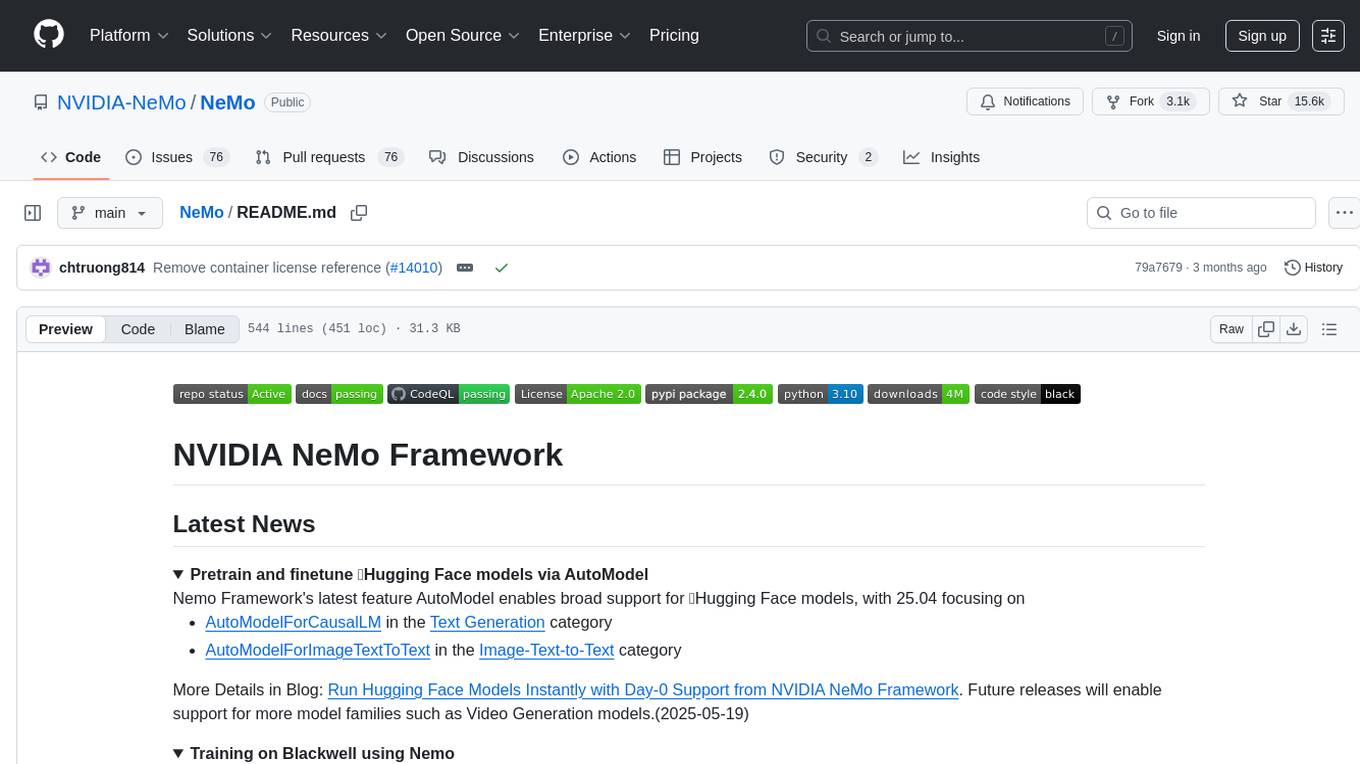
NeMo
NVIDIA NeMo Framework is a scalable and cloud-native generative AI framework built for researchers and PyTorch developers working on Large Language Models (LLMs), Multimodal Models (MMs), Automatic Speech Recognition (ASR), Text to Speech (TTS), and Computer Vision (CV) domains. It is designed to help you efficiently create, customize, and deploy new generative AI models by leveraging existing code and pre-trained model checkpoints.
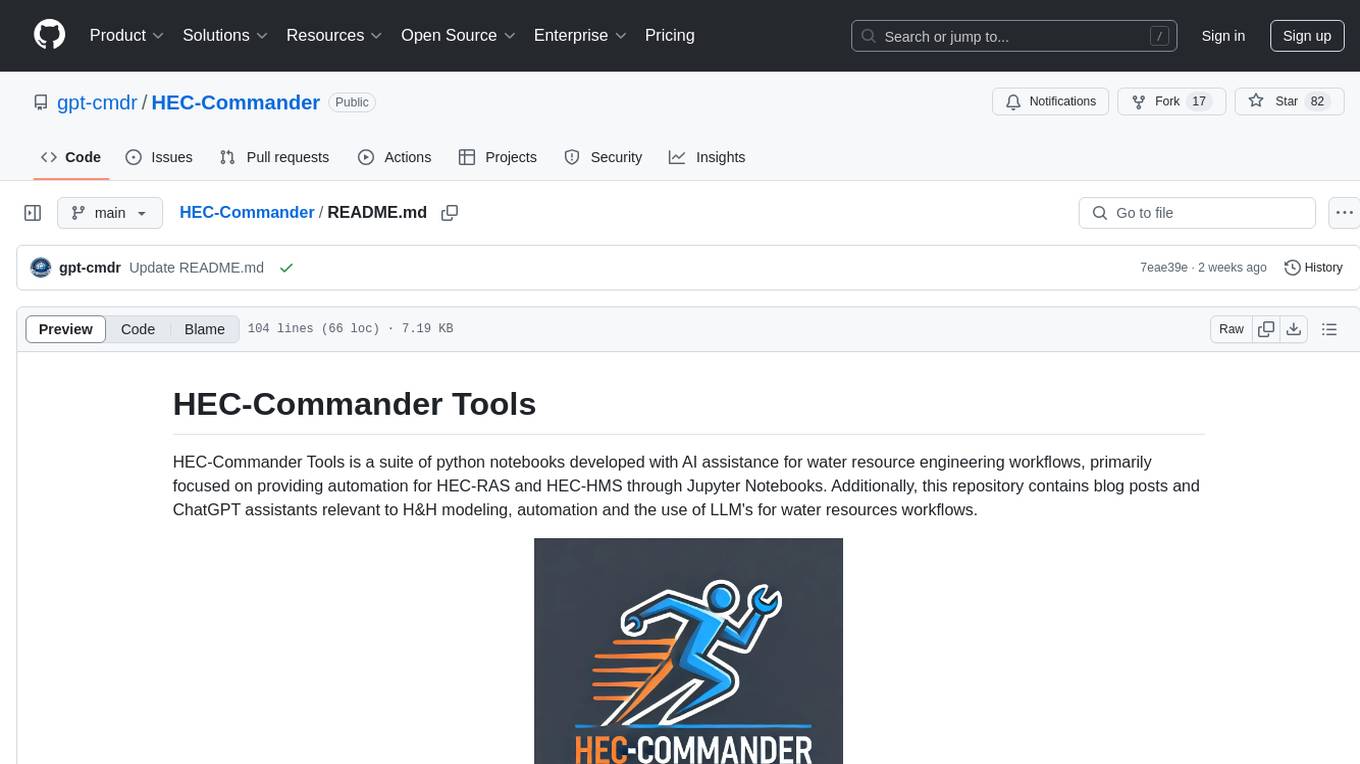
HEC-Commander
HEC-Commander Tools is a suite of python notebooks developed with AI assistance for water resource engineering workflows, focused on providing automation for HEC-RAS and HEC-HMS through Jupyter Notebooks. It contains automation scripts for HEC-HMS and HEC-RAS, tools for plotting results, and miscellaneous scripts for workflow assistance. The repository also includes blog posts, ChatGPT assistants, and presentations related to H&H modeling and the use of LLM's for water resources workflows.
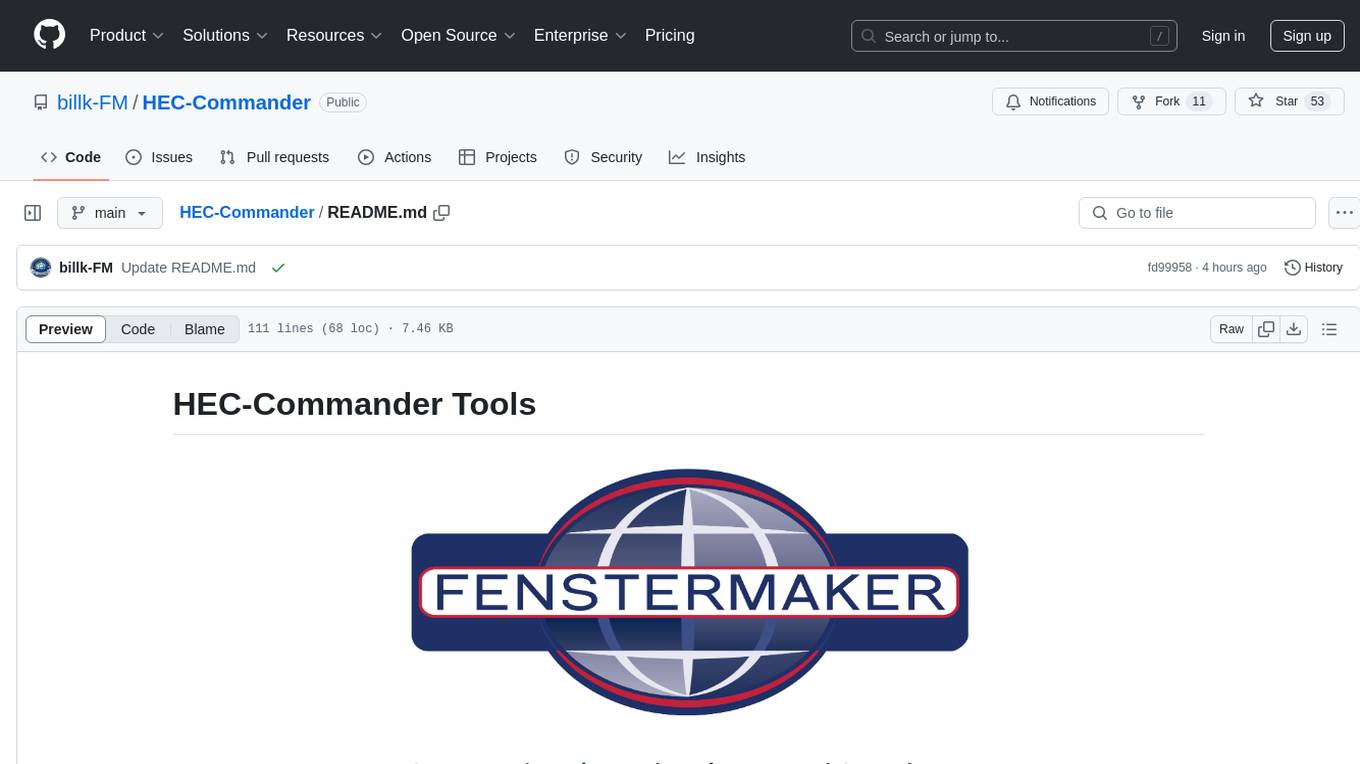
HEC-Commander
HEC-Commander Tools is a suite of python notebooks developed with AI assistance for water resource engineering workflows, providing automation for HEC-RAS and HEC-HMS through Jupyter Notebooks. It contains automation scripts for HEC-HMS, HEC-RAS, and DSS, along with miscellaneous tools. The repository also includes blog posts, ChatGPT assistants, and presentations related to H&H modeling and water resources workflows. Developed to support Region 4 of the Louisiana Watershed Initiative by Fenstermaker.
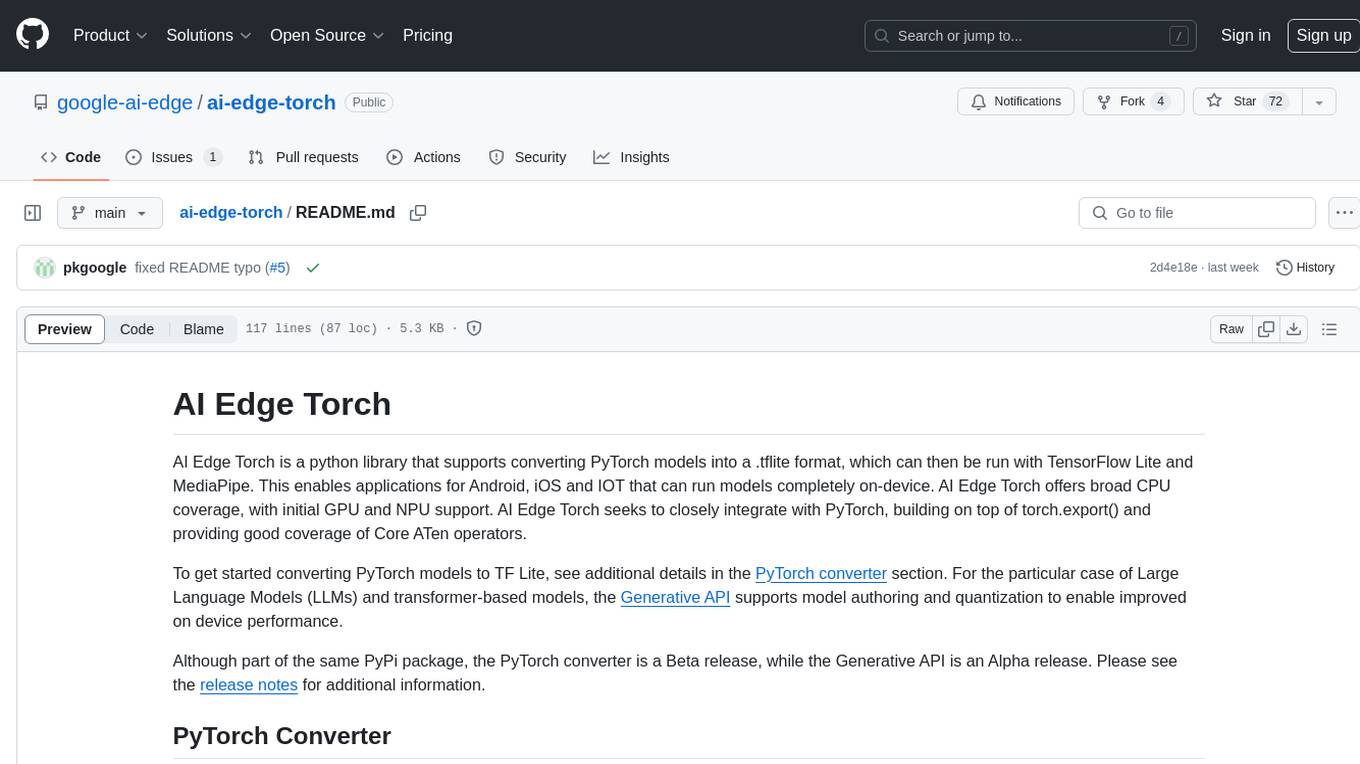
ai-edge-torch
AI Edge Torch is a Python library that supports converting PyTorch models into a .tflite format for on-device applications on Android, iOS, and IoT devices. It offers broad CPU coverage with initial GPU and NPU support, closely integrating with PyTorch and providing good coverage of Core ATen operators. The library includes a PyTorch converter for model conversion and a Generative API for authoring mobile-optimized PyTorch Transformer models, enabling easy deployment of Large Language Models (LLMs) on mobile devices.
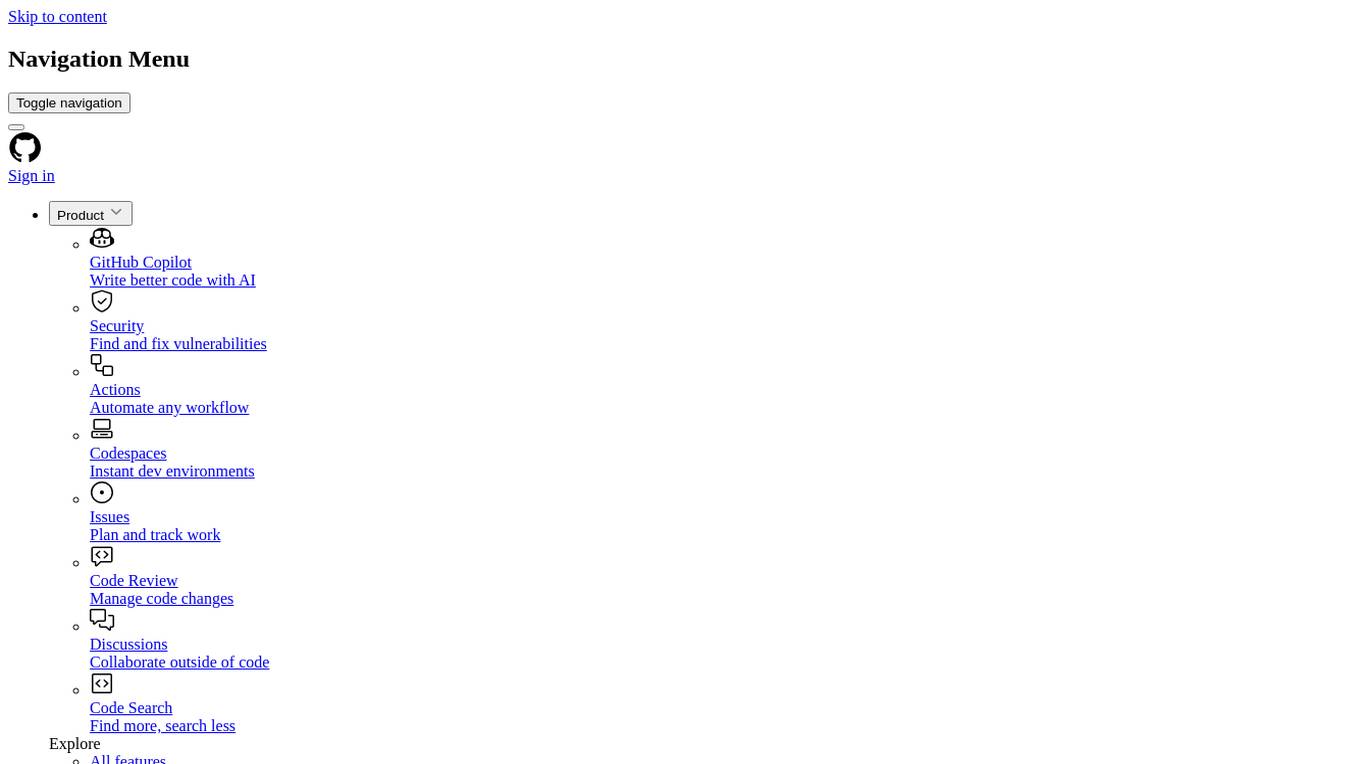
agentUniverse
agentUniverse is a multi-agent framework based on large language models, providing flexible capabilities for building individual agents. It focuses on collaborative pattern components to solve problems in various fields and integrates domain experience. The framework supports LLM model integration and offers various pattern components like PEER and DOE. Users can easily configure models and set up agents for tasks. agentUniverse aims to assist developers and enterprises in constructing domain-expert-level intelligent agents for seamless collaboration.
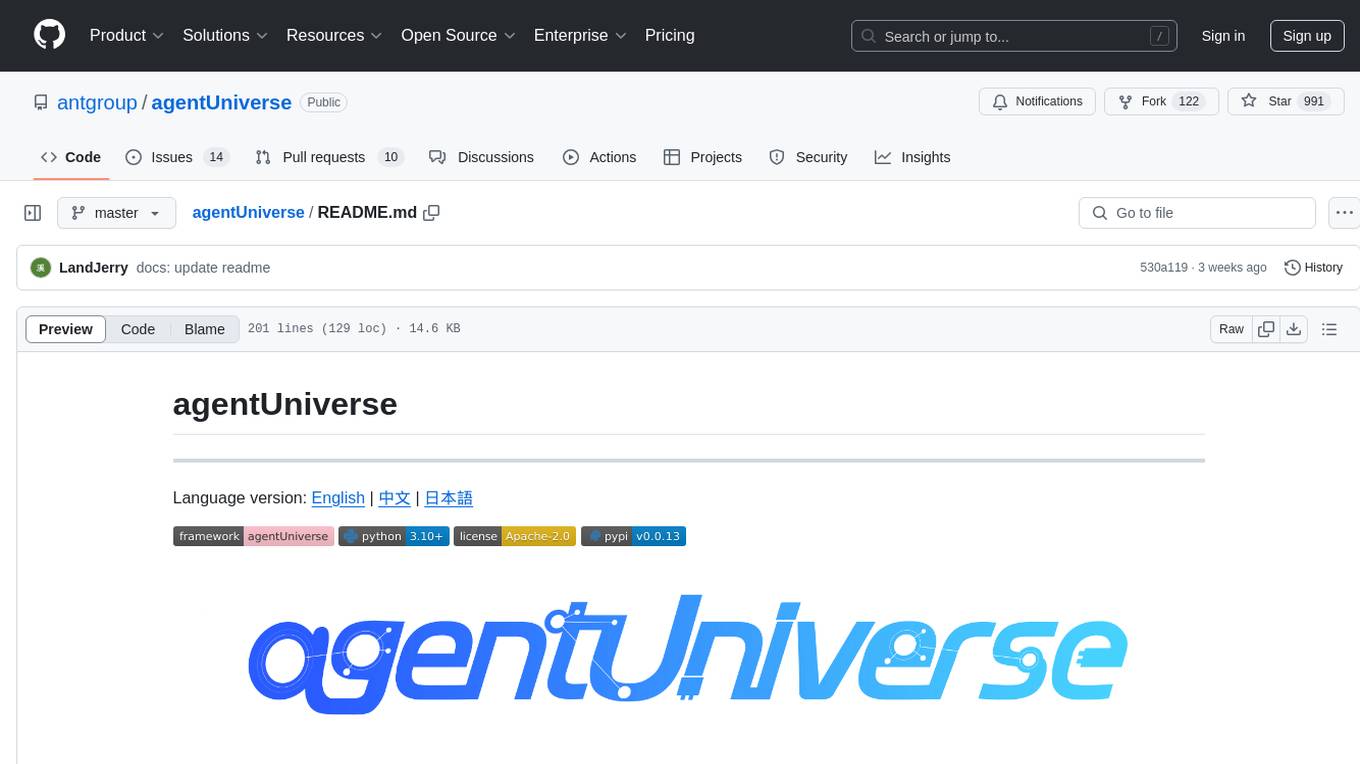
agentUniverse
agentUniverse is a multi-agent framework based on large language models, providing flexible capabilities for building individual agents. It focuses on multi-agent collaborative patterns, integrating domain experience to help agents solve problems in various fields. The framework includes pattern components like PEER and DOE for event interpretation, industry analysis, and financial report generation. It offers features for agent construction, multi-agent collaboration, and domain expertise integration, aiming to create intelligent applications with professional know-how.
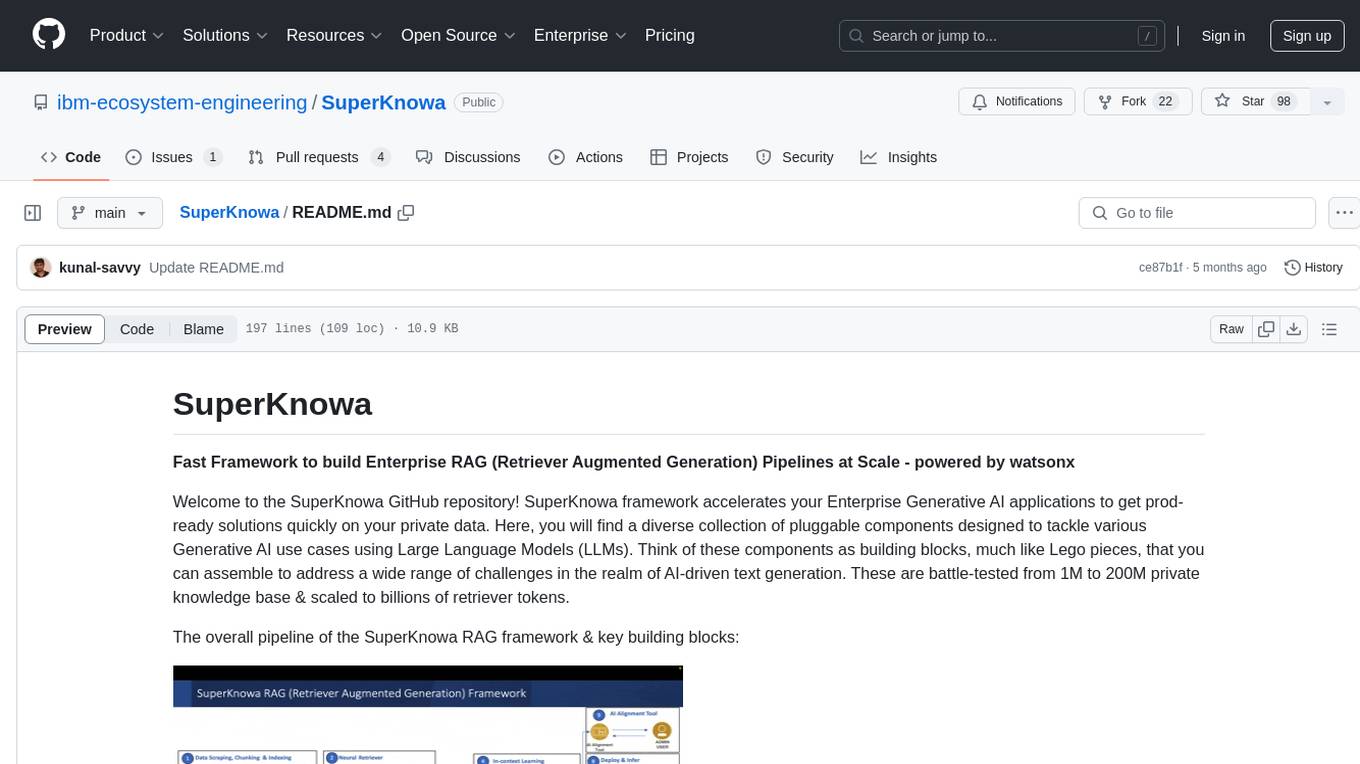
SuperKnowa
SuperKnowa is a fast framework to build Enterprise RAG (Retriever Augmented Generation) Pipelines at Scale, powered by watsonx. It accelerates Enterprise Generative AI applications to get prod-ready solutions quickly on private data. The framework provides pluggable components for tackling various Generative AI use cases using Large Language Models (LLMs), allowing users to assemble building blocks to address challenges in AI-driven text generation. SuperKnowa is battle-tested from 1M to 200M private knowledge base & scaled to billions of retriever tokens.
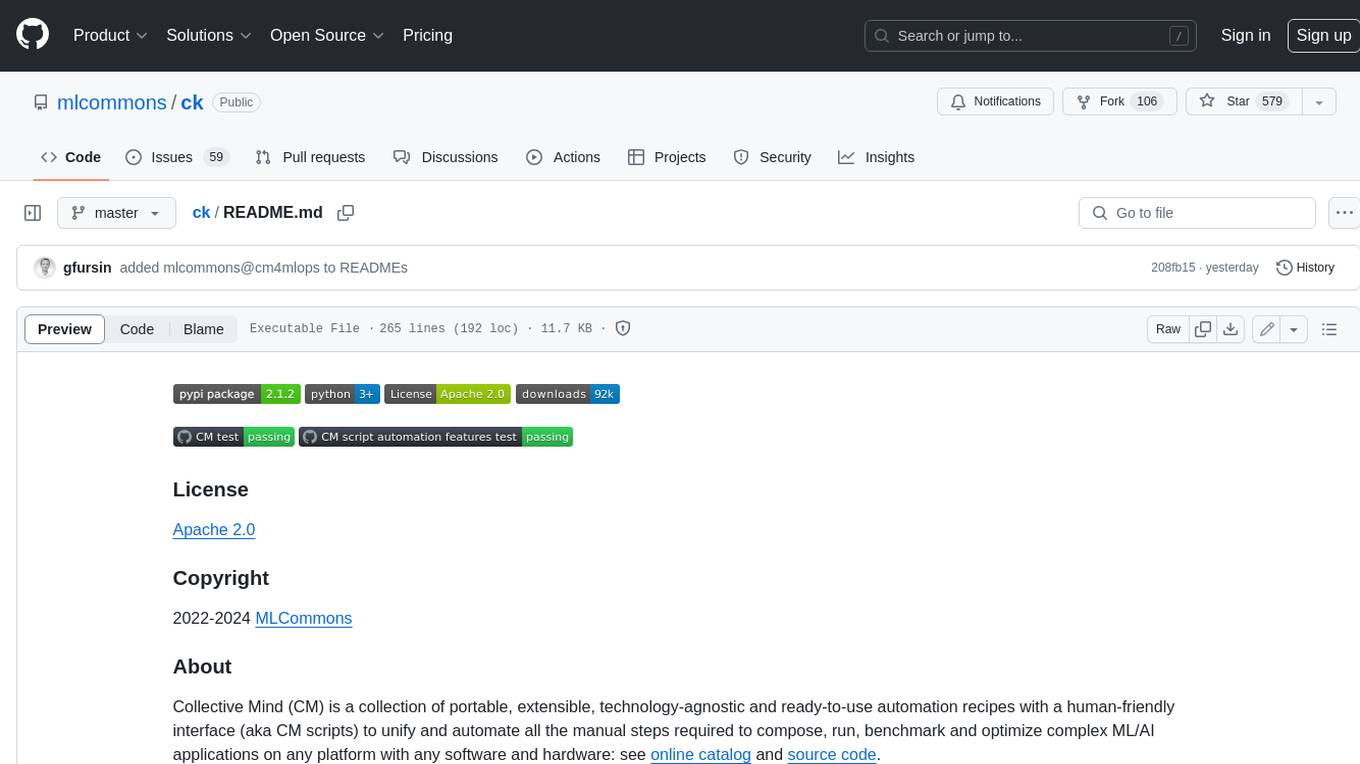
ck
Collective Mind (CM) is a collection of portable, extensible, technology-agnostic and ready-to-use automation recipes with a human-friendly interface (aka CM scripts) to unify and automate all the manual steps required to compose, run, benchmark and optimize complex ML/AI applications on any platform with any software and hardware: see online catalog and source code. CM scripts require Python 3.7+ with minimal dependencies and are continuously extended by the community and MLCommons members to run natively on Ubuntu, MacOS, Windows, RHEL, Debian, Amazon Linux and any other operating system, in a cloud or inside automatically generated containers while keeping backward compatibility - please don't hesitate to report encountered issues here and contact us via public Discord Server to help this collaborative engineering effort! CM scripts were originally developed based on the following requirements from the MLCommons members to help them automatically compose and optimize complex MLPerf benchmarks, applications and systems across diverse and continuously changing models, data sets, software and hardware from Nvidia, Intel, AMD, Google, Qualcomm, Amazon and other vendors: * must work out of the box with the default options and without the need to edit some paths, environment variables and configuration files; * must be non-intrusive, easy to debug and must reuse existing user scripts and automation tools (such as cmake, make, ML workflows, python poetry and containers) rather than substituting them; * must have a very simple and human-friendly command line with a Python API and minimal dependencies; * must require minimal or zero learning curve by using plain Python, native scripts, environment variables and simple JSON/YAML descriptions instead of inventing new workflow languages; * must have the same interface to run all automations natively, in a cloud or inside containers. CM scripts were successfully validated by MLCommons to modularize MLPerf inference benchmarks and help the community automate more than 95% of all performance and power submissions in the v3.1 round across more than 120 system configurations (models, frameworks, hardware) while reducing development and maintenance costs.
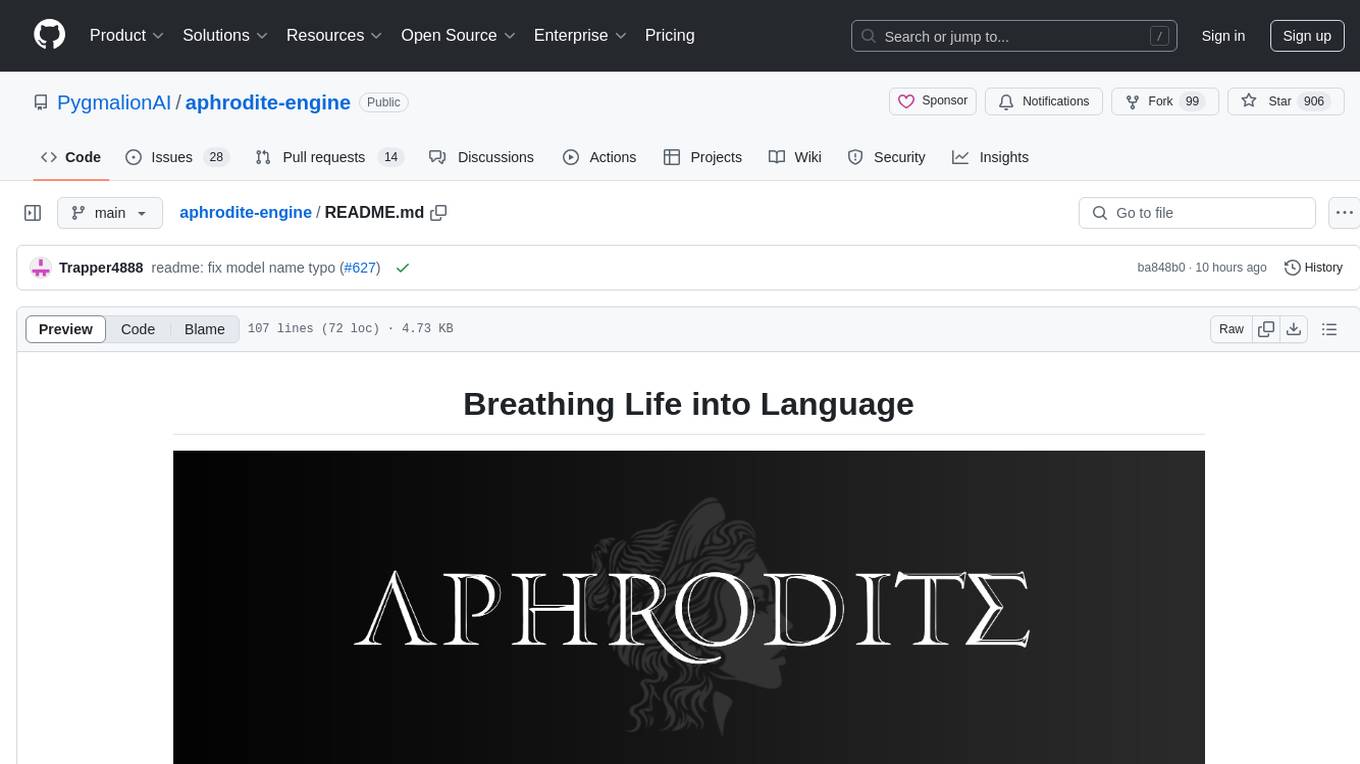
aphrodite-engine
Aphrodite is the official backend engine for PygmalionAI, serving as the inference endpoint for the website. It allows serving Hugging Face-compatible models with fast speeds. Features include continuous batching, efficient K/V management, optimized CUDA kernels, quantization support, distributed inference, and 8-bit KV Cache. The engine requires Linux OS and Python 3.8 to 3.12, with CUDA >= 11 for build requirements. It supports various GPUs, CPUs, TPUs, and Inferentia. Users can limit GPU memory utilization and access full commands via CLI.
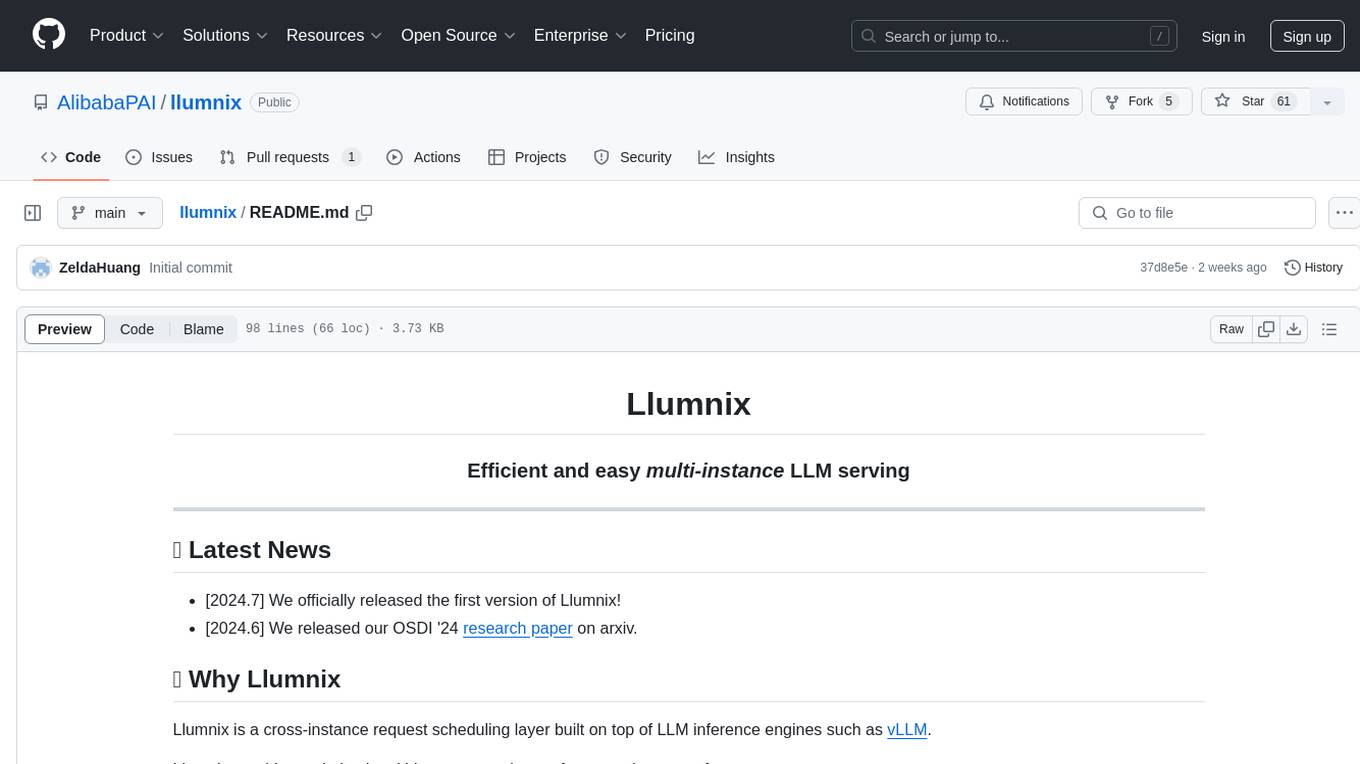
llumnix
Llumnix is a cross-instance request scheduling layer built on top of LLM inference engines such as vLLM, providing optimized multi-instance serving performance with low latency, reduced time-to-first-token (TTFT) and queuing delays, reduced time-between-tokens (TBT) and preemption stalls, and high throughput. It achieves this through dynamic, fine-grained, KV-cache-aware scheduling, continuous rescheduling across instances, KV cache migration mechanism, and seamless integration with existing multi-instance deployment platforms. Llumnix is easy to use, fault-tolerant, elastic, and extensible to more inference engines and scheduling policies.
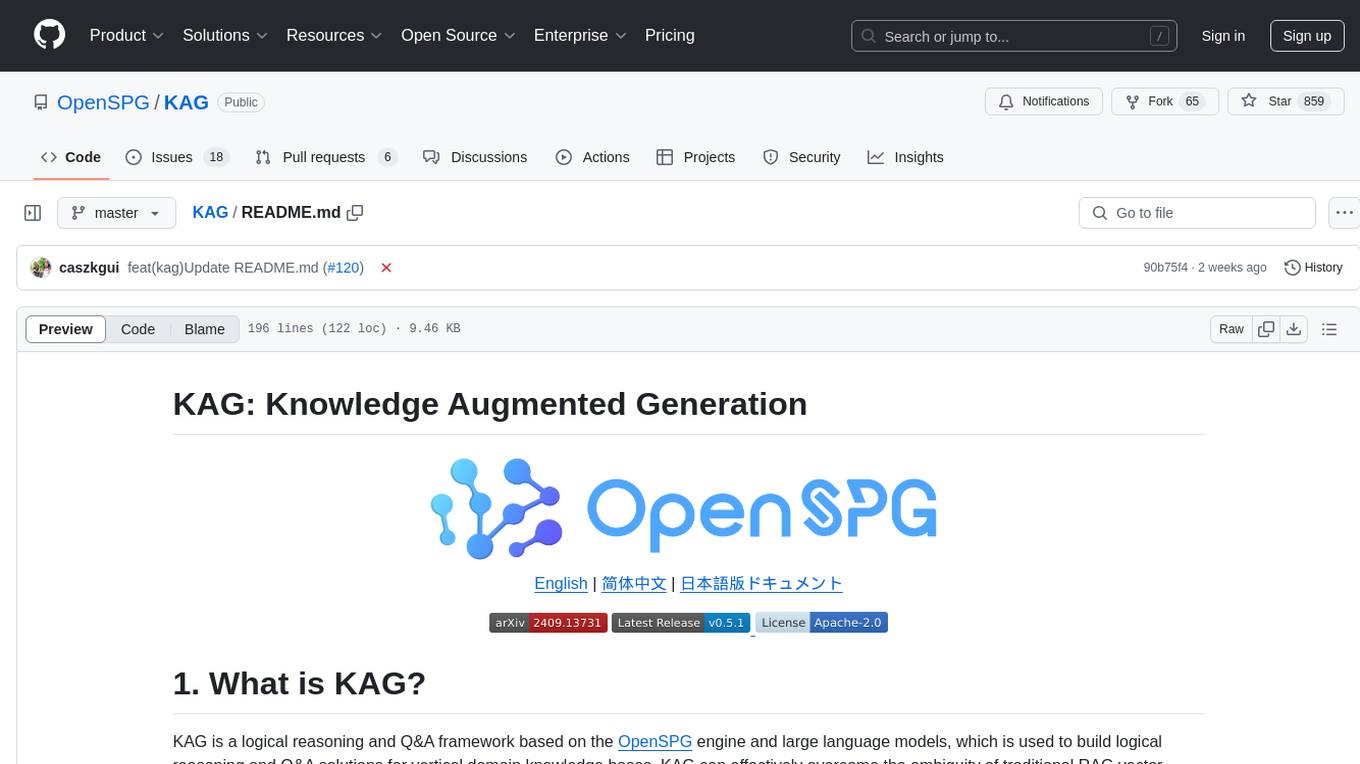
KAG
KAG is a logical reasoning and Q&A framework based on the OpenSPG engine and large language models. It is used to build logical reasoning and Q&A solutions for vertical domain knowledge bases. KAG supports logical reasoning, multi-hop fact Q&A, and integrates knowledge and chunk mutual indexing structure, conceptual semantic reasoning, schema-constrained knowledge construction, and logical form-guided hybrid reasoning and retrieval. The framework includes kg-builder for knowledge representation and kg-solver for logical symbol-guided hybrid solving and reasoning engine. KAG aims to enhance LLM service framework in professional domains by integrating logical and factual characteristics of KGs.
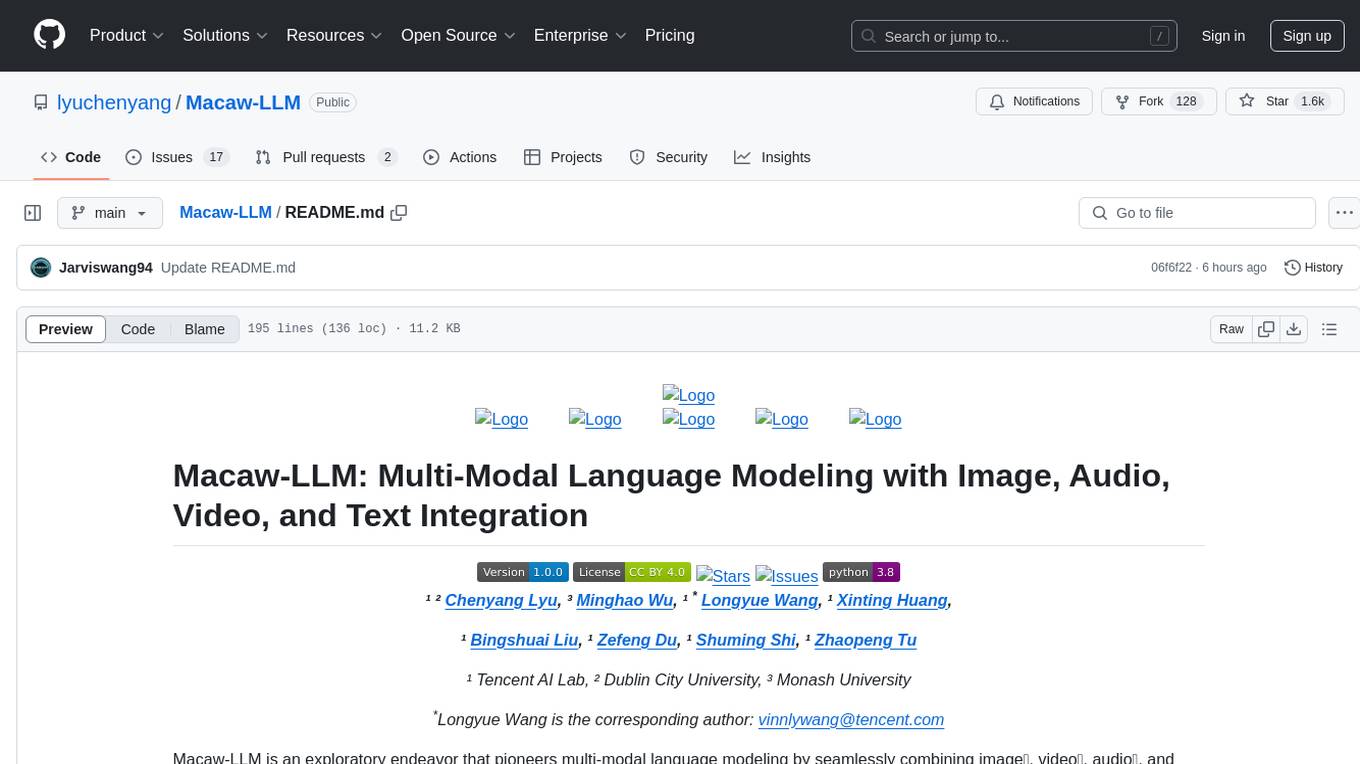
Macaw-LLM
Macaw-LLM is a pioneering multi-modal language modeling tool that seamlessly integrates image, audio, video, and text data. It builds upon CLIP, Whisper, and LLaMA models to process and analyze multi-modal information effectively. The tool boasts features like simple and fast alignment, one-stage instruction fine-tuning, and a new multi-modal instruction dataset. It enables users to align multi-modal features efficiently, encode instructions, and generate responses across different data types.
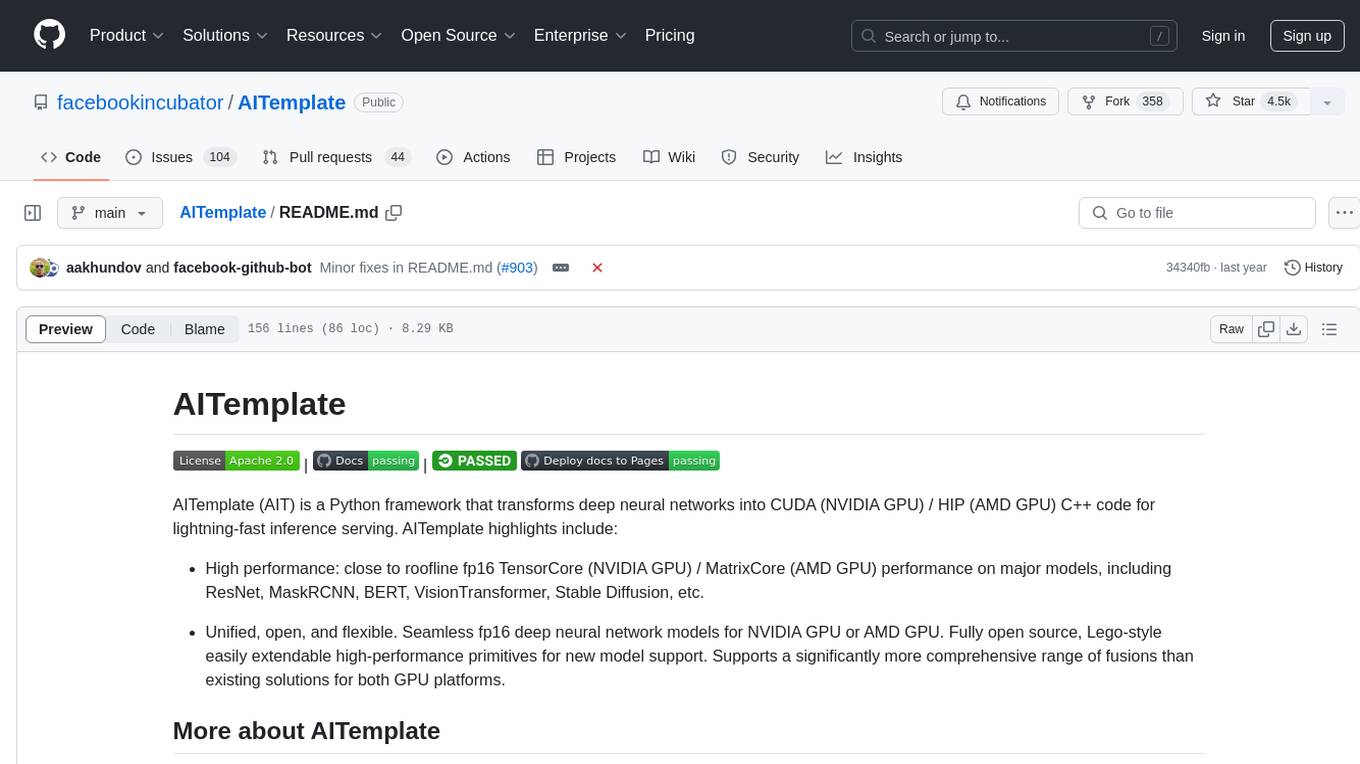
AITemplate
AITemplate (AIT) is a Python framework that transforms deep neural networks into CUDA (NVIDIA GPU) / HIP (AMD GPU) C++ code for lightning-fast inference serving. It offers high performance close to roofline fp16 TensorCore (NVIDIA GPU) / MatrixCore (AMD GPU) performance on major models. AITemplate is unified, open, and flexible, supporting a comprehensive range of fusions for both GPU platforms. It provides excellent backward capability, horizontal fusion, vertical fusion, memory fusion, and works with or without PyTorch. FX2AIT is a tool that converts PyTorch models into AIT for fast inference serving, offering easy conversion and expanded support for models with unsupported operators.
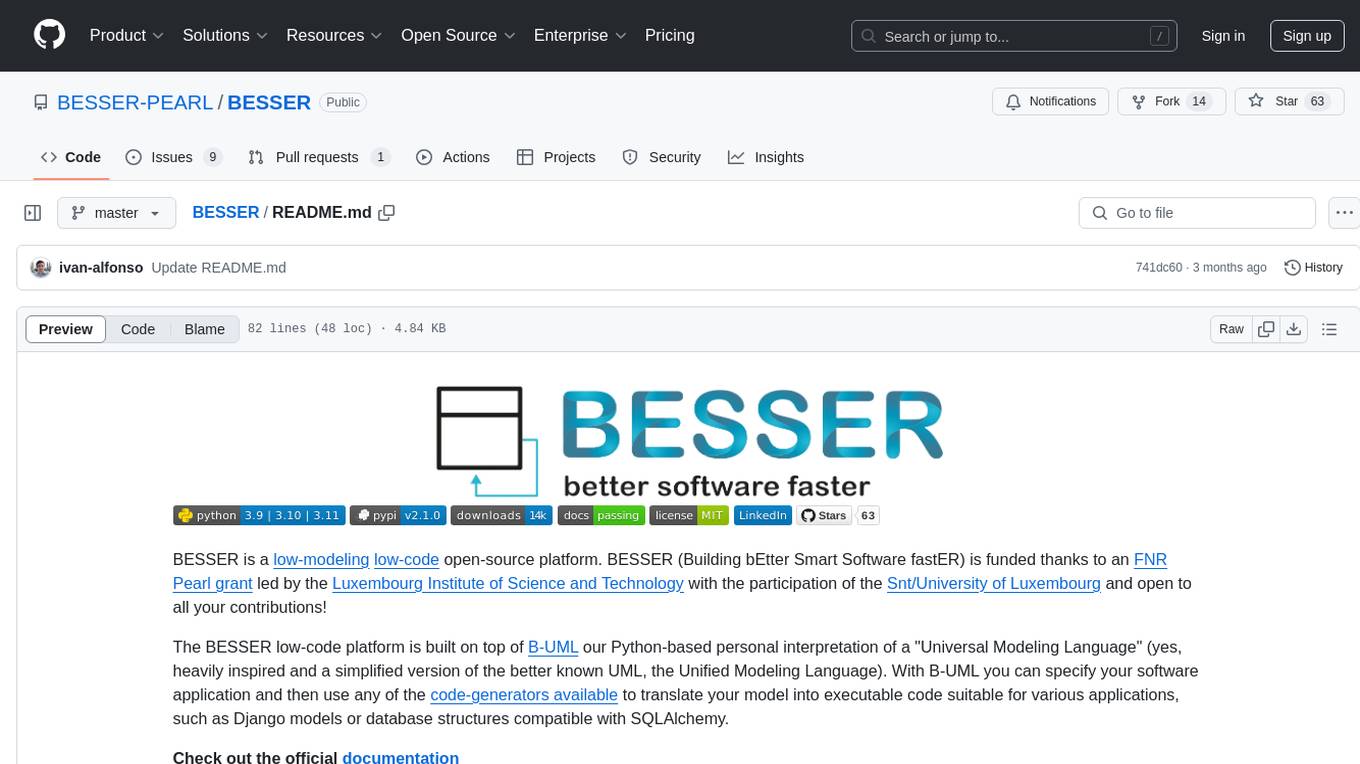
BESSER
BESSER is a low-modeling low-code open-source platform funded by an FNR Pearl grant. It is built on B-UML, a Python-based interpretation of a 'Universal Modeling Language'. Users can specify their software application using B-UML and generate executable code for various applications like Django models or SQLAlchemy-compatible database structures. BESSER is available on PyPi and can be installed with pip. It supports popular Python IDEs and encourages contributions from the community.
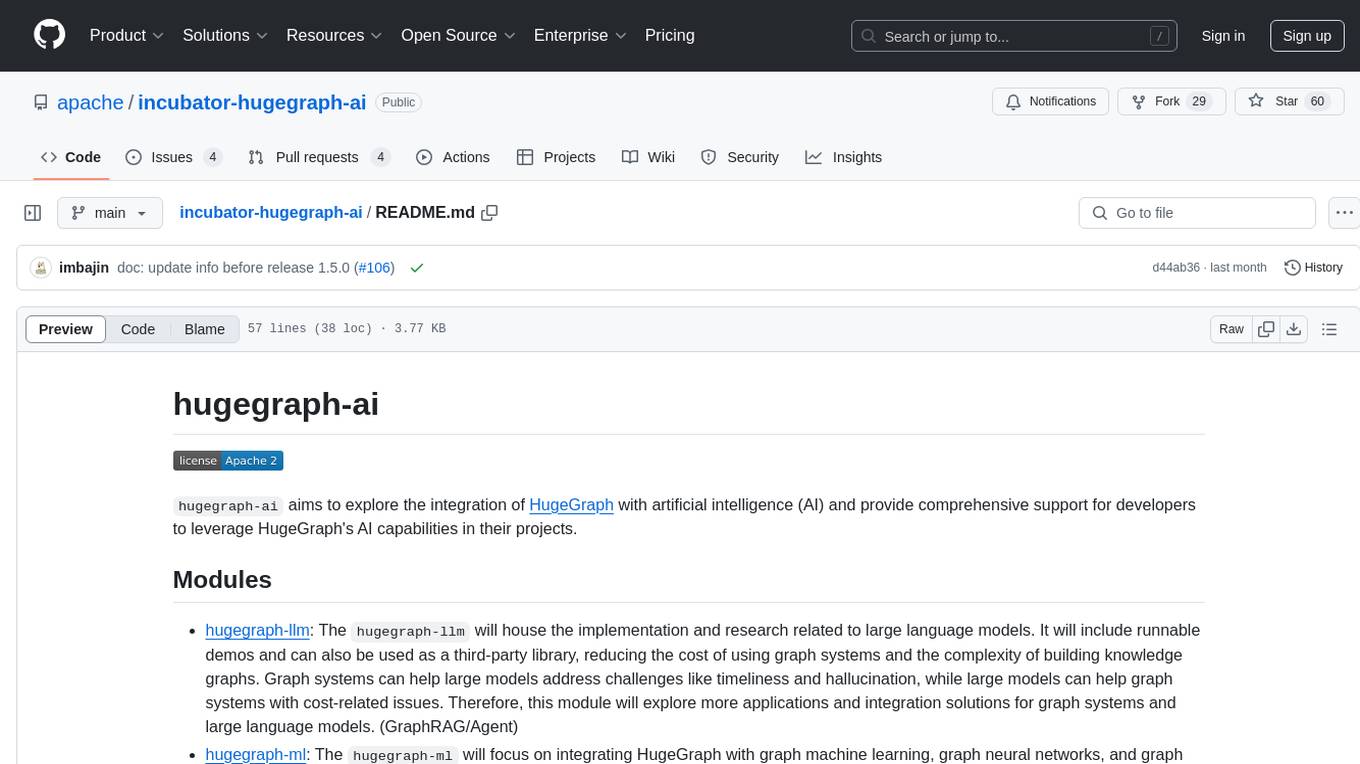
incubator-hugegraph-ai
hugegraph-ai aims to explore the integration of HugeGraph with artificial intelligence (AI) and provide comprehensive support for developers to leverage HugeGraph's AI capabilities in their projects. It includes modules for large language models, graph machine learning, and a Python client for HugeGraph. The project aims to address challenges like timeliness, hallucination, and cost-related issues by integrating graph systems with AI technologies.
For similar tasks

kaito
Kaito is an operator that automates the AI/ML inference model deployment in a Kubernetes cluster. It manages large model files using container images, avoids tuning deployment parameters to fit GPU hardware by providing preset configurations, auto-provisions GPU nodes based on model requirements, and hosts large model images in the public Microsoft Container Registry (MCR) if the license allows. Using Kaito, the workflow of onboarding large AI inference models in Kubernetes is largely simplified.

griptape
Griptape is a modular Python framework for building AI-powered applications that securely connect to your enterprise data and APIs. It offers developers the ability to maintain control and flexibility at every step. Griptape's core components include Structures (Agents, Pipelines, and Workflows), Tasks, Tools, Memory (Conversation Memory, Task Memory, and Meta Memory), Drivers (Prompt and Embedding Drivers, Vector Store Drivers, Image Generation Drivers, Image Query Drivers, SQL Drivers, Web Scraper Drivers, and Conversation Memory Drivers), Engines (Query Engines, Extraction Engines, Summary Engines, Image Generation Engines, and Image Query Engines), and additional components (Rulesets, Loaders, Artifacts, Chunkers, and Tokenizers). Griptape enables developers to create AI-powered applications with ease and efficiency.

zep-python
Zep is an open-source platform for building and deploying large language model (LLM) applications. It provides a suite of tools and services that make it easy to integrate LLMs into your applications, including chat history memory, embedding, vector search, and data enrichment. Zep is designed to be scalable, reliable, and easy to use, making it a great choice for developers who want to build LLM-powered applications quickly and easily.
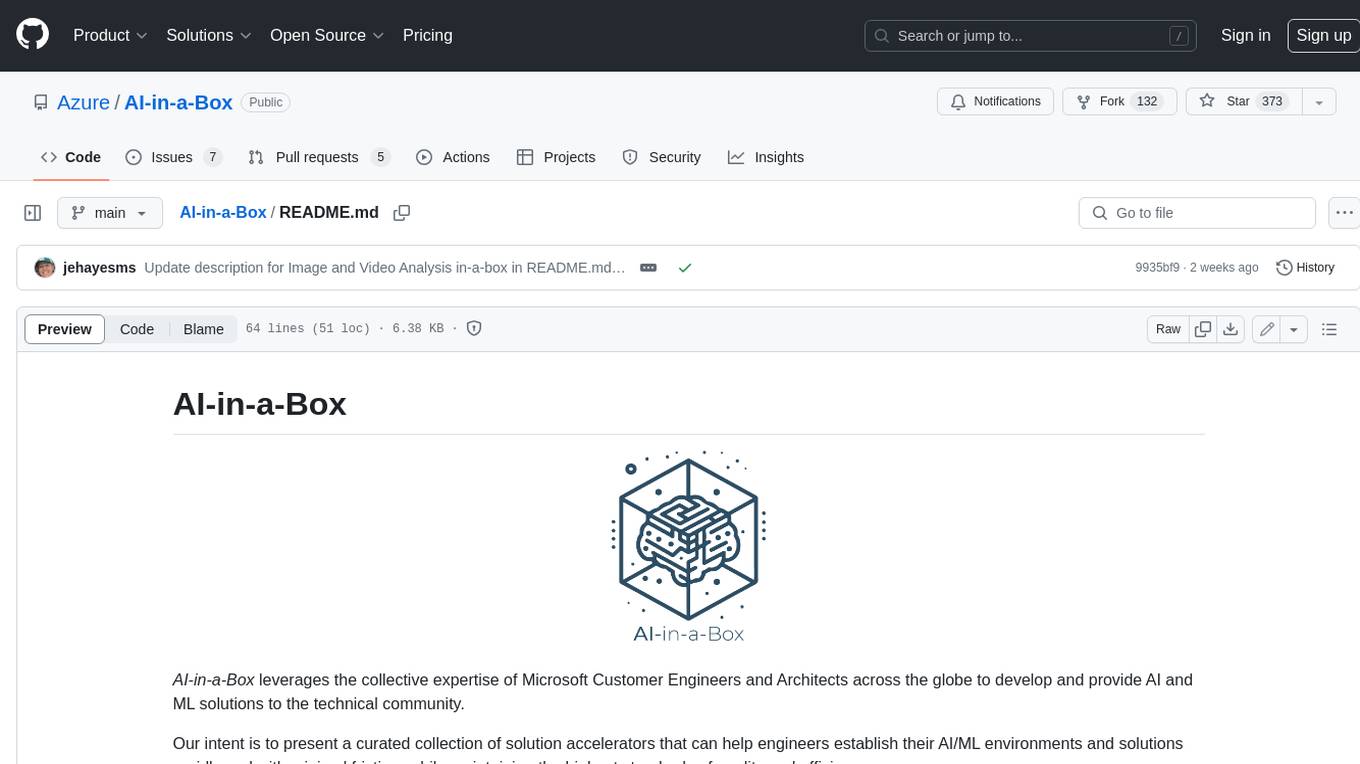
AI-in-a-Box
AI-in-a-Box is a curated collection of solution accelerators that can help engineers establish their AI/ML environments and solutions rapidly and with minimal friction, while maintaining the highest standards of quality and efficiency. It provides essential guidance on the responsible use of AI and LLM technologies, specific security guidance for Generative AI (GenAI) applications, and best practices for scaling OpenAI applications within Azure. The available accelerators include: Azure ML Operationalization in-a-box, Edge AI in-a-box, Doc Intelligence in-a-box, Image and Video Analysis in-a-box, Cognitive Services Landing Zone in-a-box, Semantic Kernel Bot in-a-box, NLP to SQL in-a-box, Assistants API in-a-box, and Assistants API Bot in-a-box.

NeMo
NeMo Framework is a generative AI framework built for researchers and pytorch developers working on large language models (LLMs), multimodal models (MM), automatic speech recognition (ASR), and text-to-speech synthesis (TTS). The primary objective of NeMo is to provide a scalable framework for researchers and developers from industry and academia to more easily implement and design new generative AI models by being able to leverage existing code and pretrained models.
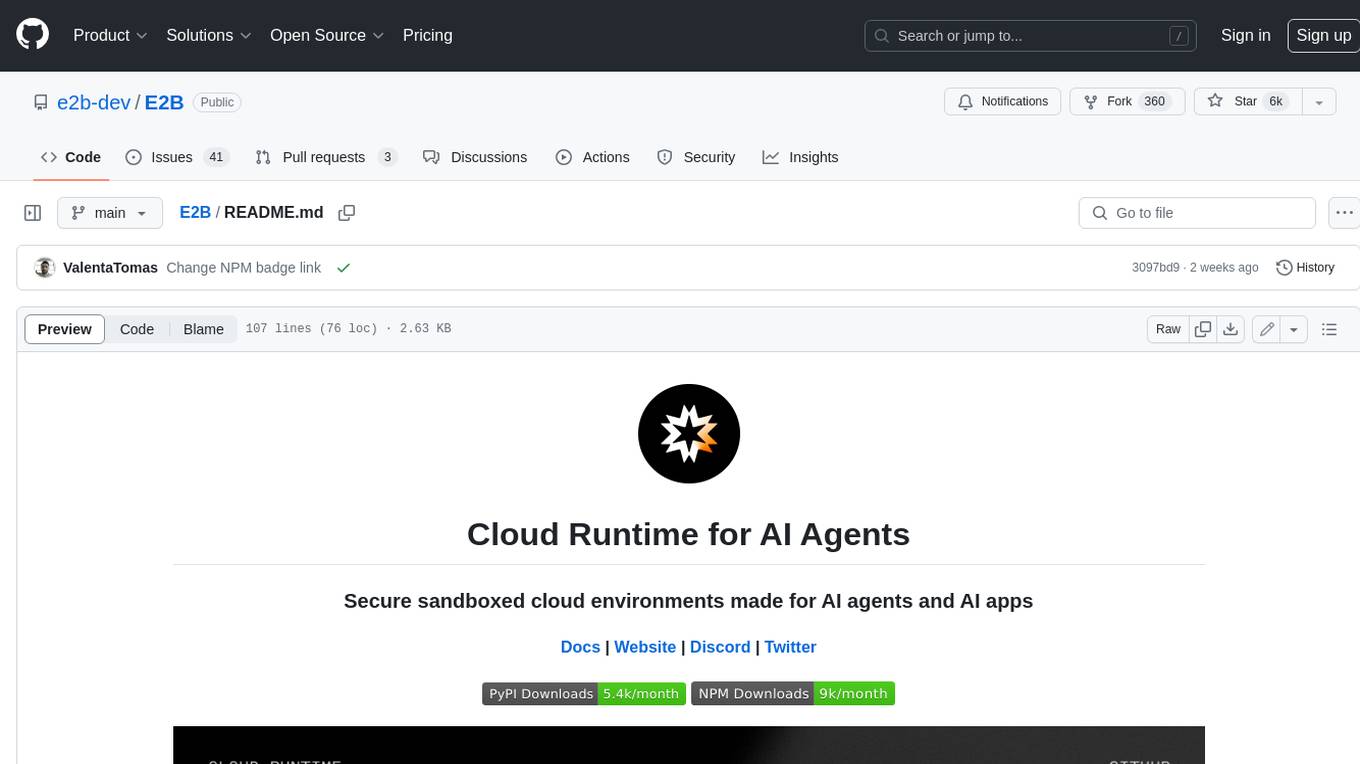
E2B
E2B Sandbox is a secure sandboxed cloud environment made for AI agents and AI apps. Sandboxes allow AI agents and apps to have long running cloud secure environments. In these environments, large language models can use the same tools as humans do. For example: * Cloud browsers * GitHub repositories and CLIs * Coding tools like linters, autocomplete, "go-to defintion" * Running LLM generated code * Audio & video editing The E2B sandbox can be connected to any LLM and any AI agent or app.
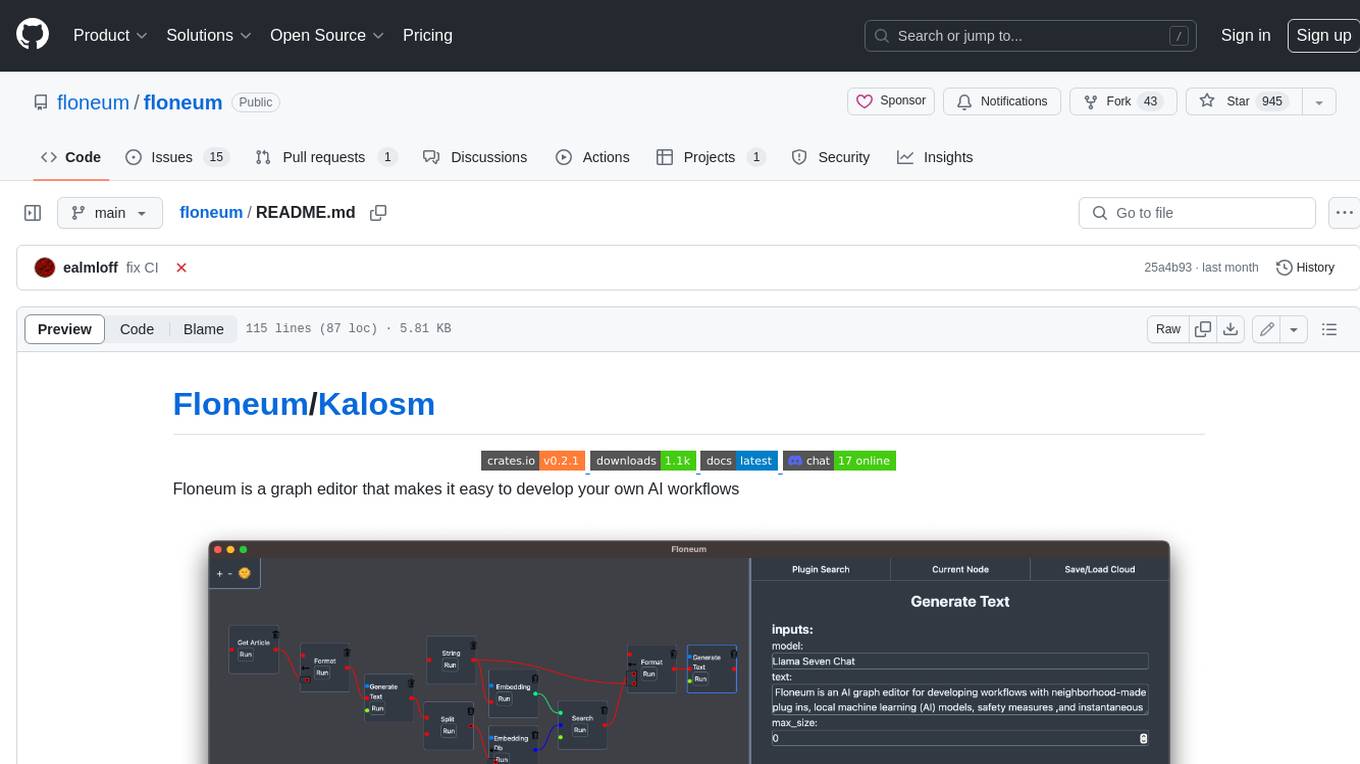
floneum
Floneum is a graph editor that makes it easy to develop your own AI workflows. It uses large language models (LLMs) to run AI models locally, without any external dependencies or even a GPU. This makes it easy to use LLMs with your own data, without worrying about privacy. Floneum also has a plugin system that allows you to improve the performance of LLMs and make them work better for your specific use case. Plugins can be used in any language that supports web assembly, and they can control the output of LLMs with a process similar to JSONformer or guidance.

dify
Dify is an open-source LLM app development platform that combines AI workflow, RAG pipeline, agent capabilities, model management, observability features, and more. It allows users to quickly go from prototype to production. Key features include: 1. Workflow: Build and test powerful AI workflows on a visual canvas. 2. Comprehensive model support: Seamless integration with hundreds of proprietary / open-source LLMs from dozens of inference providers and self-hosted solutions. 3. Prompt IDE: Intuitive interface for crafting prompts, comparing model performance, and adding additional features. 4. RAG Pipeline: Extensive RAG capabilities that cover everything from document ingestion to retrieval. 5. Agent capabilities: Define agents based on LLM Function Calling or ReAct, and add pre-built or custom tools. 6. LLMOps: Monitor and analyze application logs and performance over time. 7. Backend-as-a-Service: All of Dify's offerings come with corresponding APIs for easy integration into your own business logic.
For similar jobs

sweep
Sweep is an AI junior developer that turns bugs and feature requests into code changes. It automatically handles developer experience improvements like adding type hints and improving test coverage.

teams-ai
The Teams AI Library is a software development kit (SDK) that helps developers create bots that can interact with Teams and Microsoft 365 applications. It is built on top of the Bot Framework SDK and simplifies the process of developing bots that interact with Teams' artificial intelligence capabilities. The SDK is available for JavaScript/TypeScript, .NET, and Python.

ai-guide
This guide is dedicated to Large Language Models (LLMs) that you can run on your home computer. It assumes your PC is a lower-end, non-gaming setup.

classifai
Supercharge WordPress Content Workflows and Engagement with Artificial Intelligence. Tap into leading cloud-based services like OpenAI, Microsoft Azure AI, Google Gemini and IBM Watson to augment your WordPress-powered websites. Publish content faster while improving SEO performance and increasing audience engagement. ClassifAI integrates Artificial Intelligence and Machine Learning technologies to lighten your workload and eliminate tedious tasks, giving you more time to create original content that matters.

chatbot-ui
Chatbot UI is an open-source AI chat app that allows users to create and deploy their own AI chatbots. It is easy to use and can be customized to fit any need. Chatbot UI is perfect for businesses, developers, and anyone who wants to create a chatbot.

BricksLLM
BricksLLM is a cloud native AI gateway written in Go. Currently, it provides native support for OpenAI, Anthropic, Azure OpenAI and vLLM. BricksLLM aims to provide enterprise level infrastructure that can power any LLM production use cases. Here are some use cases for BricksLLM: * Set LLM usage limits for users on different pricing tiers * Track LLM usage on a per user and per organization basis * Block or redact requests containing PIIs * Improve LLM reliability with failovers, retries and caching * Distribute API keys with rate limits and cost limits for internal development/production use cases * Distribute API keys with rate limits and cost limits for students

uAgents
uAgents is a Python library developed by Fetch.ai that allows for the creation of autonomous AI agents. These agents can perform various tasks on a schedule or take action on various events. uAgents are easy to create and manage, and they are connected to a fast-growing network of other uAgents. They are also secure, with cryptographically secured messages and wallets.

griptape
Griptape is a modular Python framework for building AI-powered applications that securely connect to your enterprise data and APIs. It offers developers the ability to maintain control and flexibility at every step. Griptape's core components include Structures (Agents, Pipelines, and Workflows), Tasks, Tools, Memory (Conversation Memory, Task Memory, and Meta Memory), Drivers (Prompt and Embedding Drivers, Vector Store Drivers, Image Generation Drivers, Image Query Drivers, SQL Drivers, Web Scraper Drivers, and Conversation Memory Drivers), Engines (Query Engines, Extraction Engines, Summary Engines, Image Generation Engines, and Image Query Engines), and additional components (Rulesets, Loaders, Artifacts, Chunkers, and Tokenizers). Griptape enables developers to create AI-powered applications with ease and efficiency.



